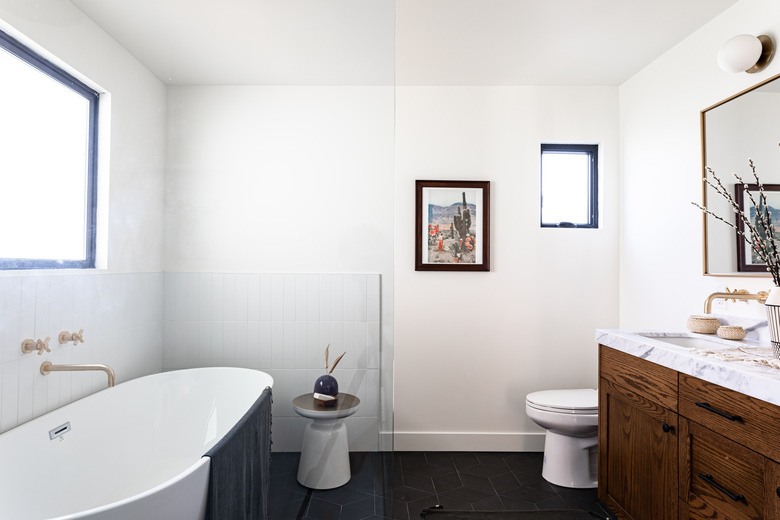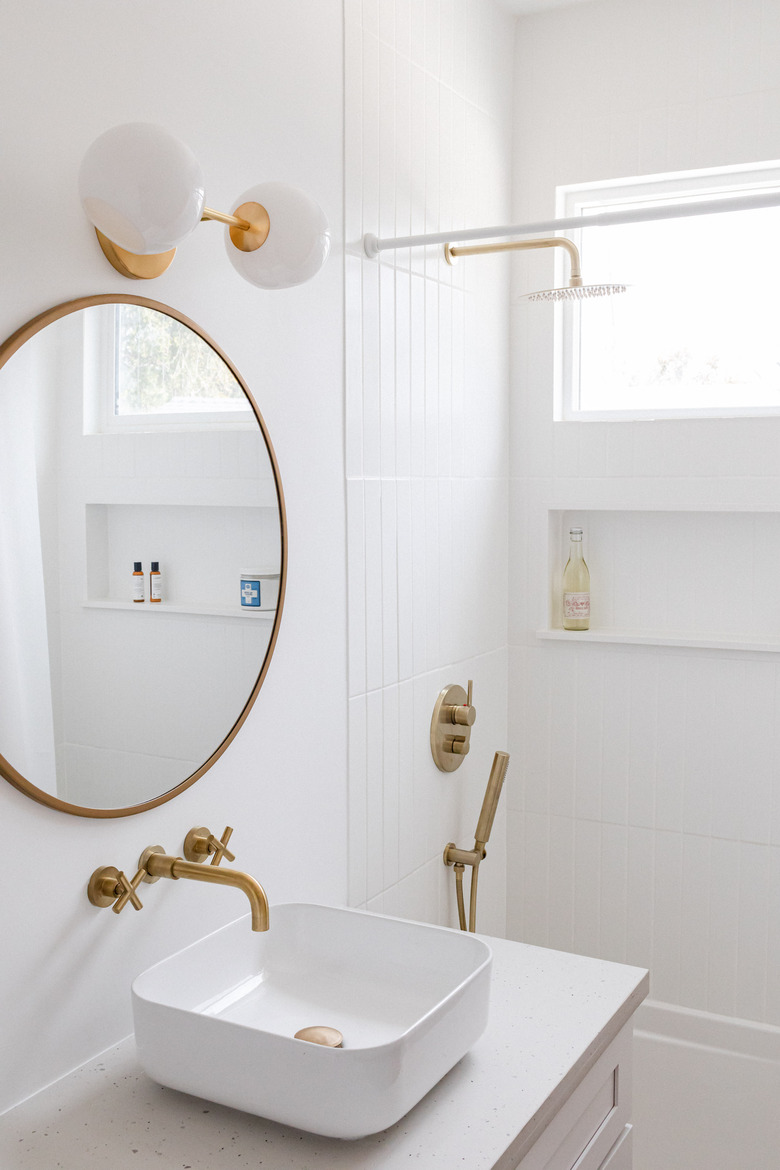Do You Need Permits To Remodel A Bathroom?
Whether tackling a bathroom remodel yourself or hiring a contractor, you may need a building permit, but that's not always the case. Ultimately, it depends on exactly what you plan to change within the room and your own locality's rules. For instance, replacing the wall or floor tile does not require a building permit for the most part, but if you're adding wall outlets or knocking down walls, you will need permits.
Tip
Remodels that involve structural changes or plumbing or electrical modifications within walls require permits.
Whom Should You Contact for Building Permits?
Whom Should You Contact for Building Permits?
Every city or region has a governing body in charge of zoning, structural and building codes and regulations. In some cases, your project may even involve more than one department, such as the zoning department, if you wish to expand your bathroom so it extends beyond the home's current footprint.
Rules for remodeling vary from one area to the next as far as what permits and inspections are required. If you're working with a contractor, the contractor should ideally secure the permits. A contractor likely knows which parts of the bathroom remodel require permits and can answer the building department's questions about the project.
If you're handling the remodel yourself, start by perusing your local government's website for information about residential construction and remodeling. Many local governments, such as in Cleveland, Ohio, offer information online about the types of projects that require permits. Once you've determined that your remodeling project needs a building permit, call the local department in charge of such permits and explain the plans. The local representative should know what's required in terms of applying for the permit and the fees involved if any.
Structural Changes Require Building Permits
Structural Changes Require Building Permits
A structural change within the bathroom usually requires a building permit. A structural change is any change that involves expanding the size of the bathroom by knocking out and adding new walls or even cutting a hole in an exterior wall to add another window. Expanding your bathroom by tearing out a closet most likely requires a permit as well since this requires knocking out a wall or two.
Even a skylight installed in a roof requires a building permit in many cases. If you are unsure whether your project requires a permit, such as tearing out a bathtub and replacing it with a shower stall, ask a local building department representative.
Be sure to contact the building department before your bathroom remodel begins, otherwise the local governing body could stop your project in its tracks. Though securing the proper permits may seem like a hassle, it's crucial to do so to ensure the remodel follows current building, electrical and plumbing codes. Following the codes ensures the project is completed safely and makes it easier to sell the house should you attempt to do so a few years from now.
Electrical Changes Require Building Permits
Electrical Changes Require Building Permits
If you're planning to change the wiring within the bathroom walls in any way, the project requires a permit. Changing the wiring means adding new outlets or anything that involves replacing or adding new wiring within the walls. In such cases, it may be better to hire a contractor to ensure the work is completed properly. Some locales are fine with homeowners doing some electrical work within their own homes as long as the work is up to code, but others may suggest using an electrician instead.
Swapping out a wall sconce or ceiling fixture for another usually will not require a permit since the wiring within the wall or ceiling stays the same. The same holds true for adding a ceiling fan attachment to a current fixture.
Plumbing Changes Require Building Permits Too
Plumbing Changes Require Building Permits Too
Any changes to the pipes within the walls will likely require permits. For instance, if you decide to move a shower stall to another part of the bathroom and need to run new pipes to make this happen, your project probably requires permits. New drain lines also require permits. Even moving the sink over a few feet, which requires additional pipes to reach the new spot, requires a permit, according to John Moore. Your local government may require a licensed plumber rather than a homeowner to do the work when a plumbing permit is needed.
On the other hand, replacing a toilet or sink without changing the plumbing does not require a permit. Neither does changing sink, tub or shower fixtures.
Some Mechanical Projects Require Building Permits
Some Mechanical Projects Require Building Permits
Mechanical projects are those that deal with heating, cooling and ventilation systems. Those that require work on gas lines require a permit, as do changes to a system that vents through a chimney. Even installing a bathroom fan requires a vent, so it most likely requires a permit as well depending on your local regulations. Installing any type of gas or wood stove or fireplace in the bathroom most likely requires permits as well since these require tapping into a gas line or a means to vent the air to the outdoors.
Replacing minor parts of a heating or cooling system such as a vent cover does not require a permit. Portable plug-in heaters and air conditioners also do not require permits.
Changes That Don't Require Building Permits
Changes That Don't Require Building Permits
Other changes that do not require permits for a bathroom remodel include repairing or replacing the floor, painting the walls or ceiling or adding beadboard or a backsplash to the walls. Adding a vanity, cabinet or shelves does not require permits. Replacing or repairing the connection within a light switch also does not require a permit, but this work should be done with the power off. Test the wires within the outlet with a noncontact voltage tester before attempting such work.


